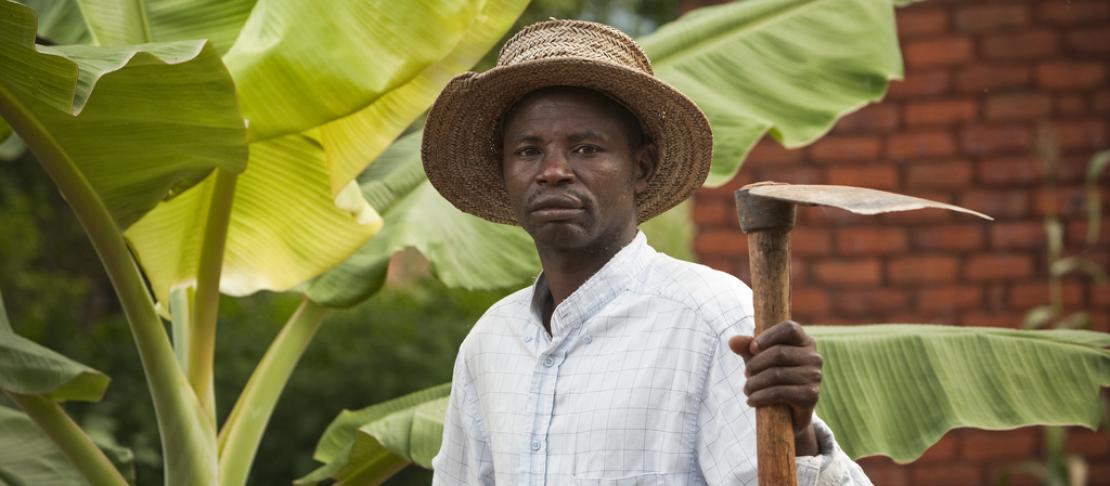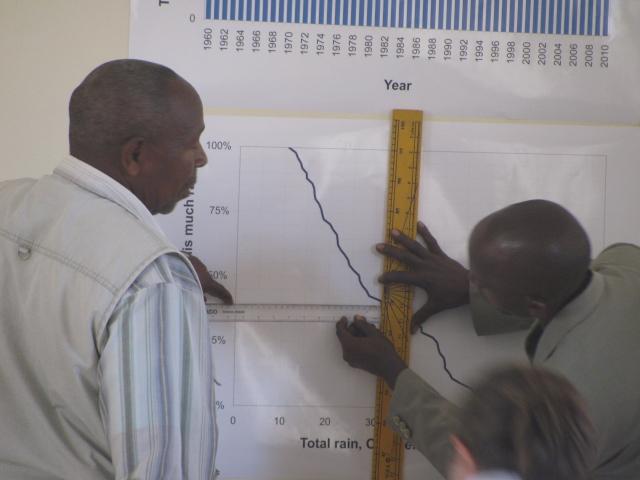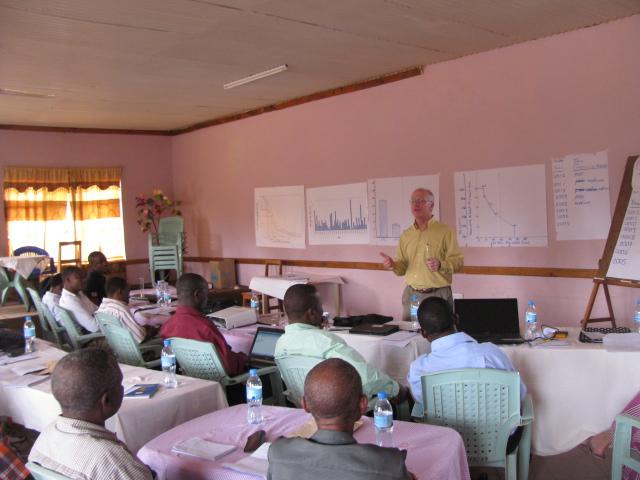How can we reach a million farmers with climate services?

Through working closely with farmers in pilot projects in Senegal and Kenya, our researchers have tested new ways of communicating complex climate information to farmers. Together researchers and farmers have learned that climate information can be used successfully by farmers to better manage risk under a variable changing climate. But how do we move from reaching hundreds of farmers to reaching a million?
As we have been grappling scaling up our project activities, three things come to mind:
First, climate services that make sense for farmers at the field level rely upon locally relevant climate data. This includes historically recorded data, current observations, and future predictions, all needed at a small enough scale to be useful to farmers. To reach large numbers of farmers, national meteorological services with limited resources need tools to be able to efficiently produce locally relevant information over large areas.
Second, climate information must be able to reach remote rural communities with enough time for farmers to make use of it. Finally, meteorological services will need to work with existing support services to help access large numbers of farmers. Agricultural extension services and development NGOs need training to equip them to incorporate communication and support for climate information into the services that they already provide smallholder farmers.

how do we go from reaching a few hundred farmers to millions with climate information? Photo: J. Hansen
The CGIAR Research Program on Climate Change, Agriculture and Food Security (CCAFS) started working with several partners to put the pieces into place to scale-up climate services for smallholder farmers and pastoralists across northern Tanzania.
Read more about Tanzania and our activities: Harnessing farmers' valuable agricultural knowledge the right way
World Vision International is the world’s largest development NGO. In Tanzania, World Vision currently serves roughly 1.7 million farmer and pastoralist households, or more than 4 million people. The recent prolonged drought in Eastern Africa inspired a new World Vision program, Secure the Future, that seeks to make its work with rural communities more resilient.
Providing climate information and supporting its use provides one avenue for building resilience to climate-related risk. World Vision-Tanzania has already invested in the human, infrastructure and communication resources needed, through its network of 64 Area Development Program offices.
As an initial step toward developing the capacity to communicate climate information with smallholder farming communities, CCAFS Theme on Climate Risk Management led a training workshop in September with a group of about 40 World Vision staff and collaborating agricultural extension officers in the town of Same in northern Tanzania.

A workshop on how to communicate seasonal forecasts to farmers in Tanzania was recently held. Photo: A.Tall (CCAFS).
Watch more photos from the workshop.
The training focused on communicating seasonal forecast with smallholder farming communities, and using past variability to communicate the degree of accuracy of the seasonal forecast in probabilistic terms.
Tanzania Meteorological Agency (TMA) shared the official the 2013 October-December seasonal rainfall outlook, along with their other products developed for agriculture. Groups of World Vision and agricultural extension trainees played an Early Warning - Early Action role-playing game, as a way to think through how farmers may interact with other stakeholders as they factor climate information at a range of time scales (seasonal, dekadal, weekly and 48h) into their collective risk management decisions. The training for professionals was followed immediately with a 2-day seasonal forecast workshop for a group of 29 farmers, led by six of the trainees.
View Arame Tall's presentation from the climate information workshop:
The two training activities drew on ideas that came out of a workshop, “Developing a Methodology to Communicate Climate Services At Scale Through Intermediaries for Farmer Communities in Africa and South Asia” (Nairobi, Kenya, June 2013), and provided an opportunity to test and refine those ideas as we are developing a guidance manual.
Learn more: Developing a methodology to evaluate climate-services for farmers
Training intermediaries who already work with smallholder farmers is a key step towards bringing climate services to millions of farmers, but the issue of accessible local data remains.
The International Research Institute for Climate and Society (IRI), which hosts CCAFS Theme 2 leadership, is working with TMA on data, tools and methods that will enhance their capacity to provide local information that meets the needs of farmers.
The IRI worked with Tanzania Meteorological Agency (TMA) to develop a high-resolution (10 km grid), 30-year historic weather database, based on merging ground station and satellite observations. This provides the foundation for providing climate information at a sufficiently local scale.
Learn more about how we work with farmers: Providing climate services that make sense to farmers
The IRI Data Library software, which has been installed at TMA, provides highly flexible tools to turn the historic data into climate information products that are tailored to user needs, and can be produced and provided to users through web-based “maprooms.”
On September 2-6, before the workshop, IRI staff members provided training to equip TMA staff to statistically downscale seasonal forecasts to a local scale that is relevant to farmers, based on historic rainfall data, and to provide the forecast as a probability distribution.
The resulting downscaled October-December rainfall forecast for Same was one of the inputs to our two training workshops. With further development and testing, it will be possible to generate downscaled, probabilistic seasonal forecasts and the historic data needed to interpret them, for every 10 km grid cell across the country.
CCAFS is continuing to work with World Vision and other partners (TMA, IRI, WMO) to develop a larger effort that will bring the pieces together to bring climate services to the more than a million farmers and pastoralists that World Vision already serves.
Related resources:
Blog post: Putting climate forecasts into farmers' hands
Written by James Hansen, Arame Tall, and Alexa Jay, of the CCAFS research theme on climate risk management.



